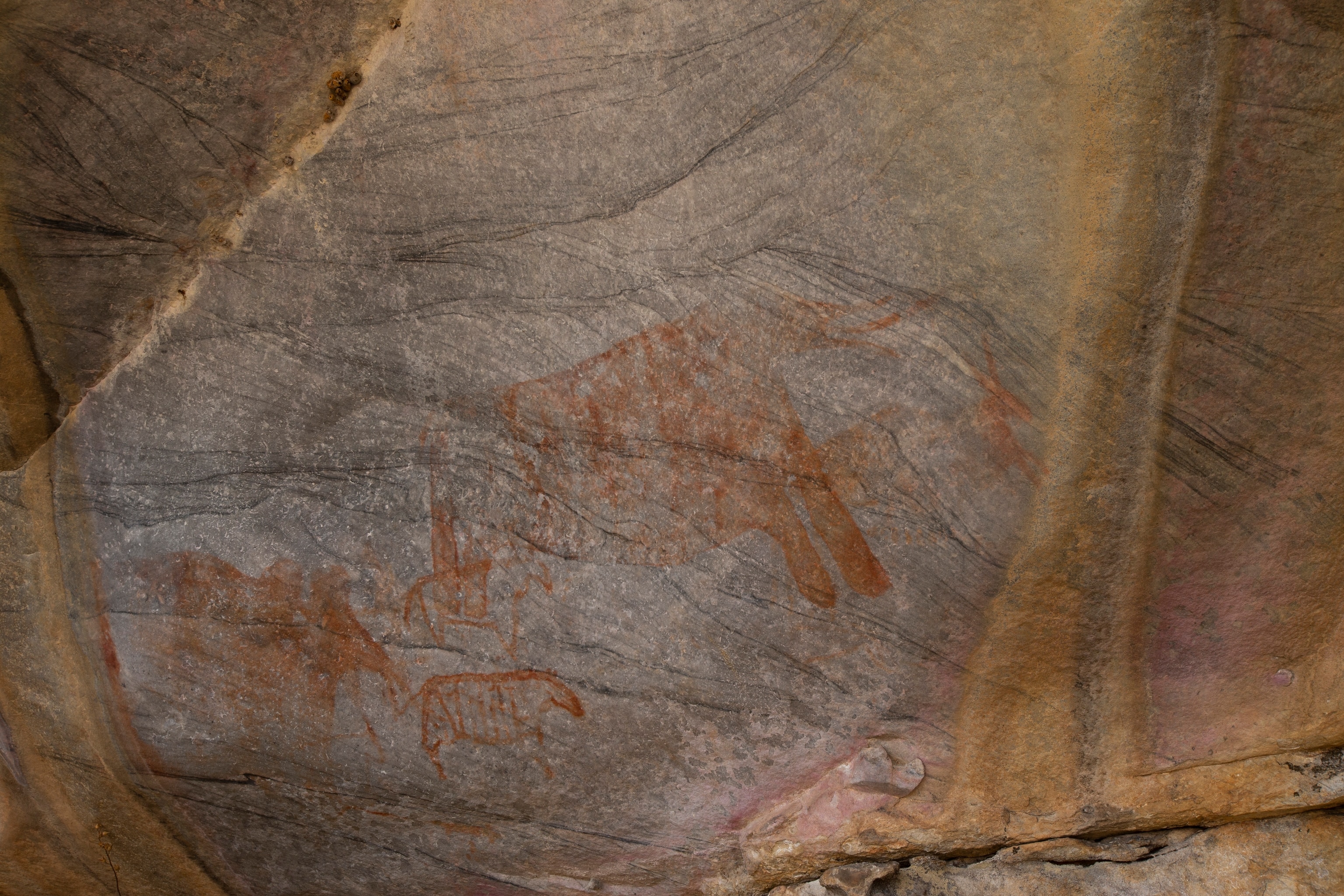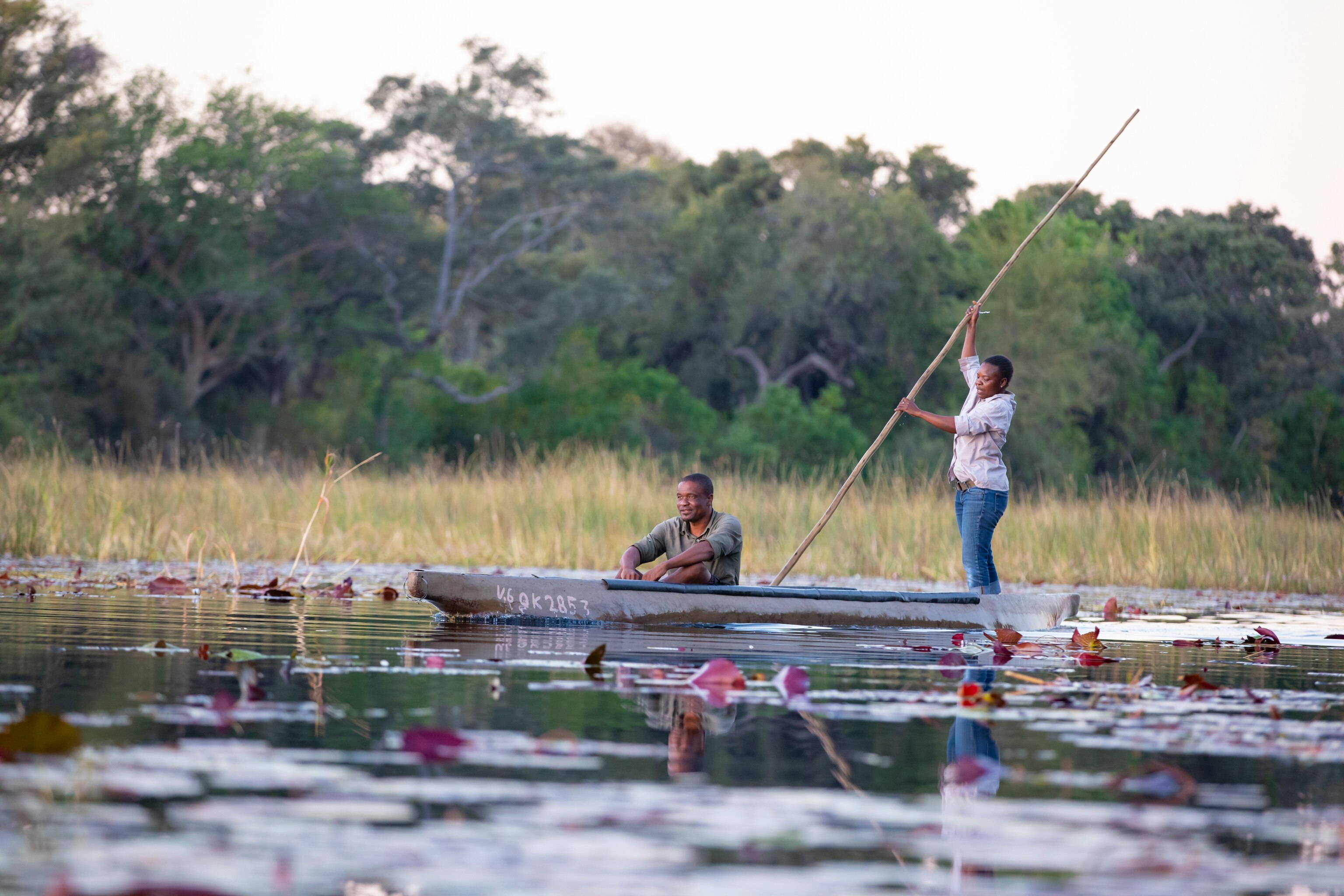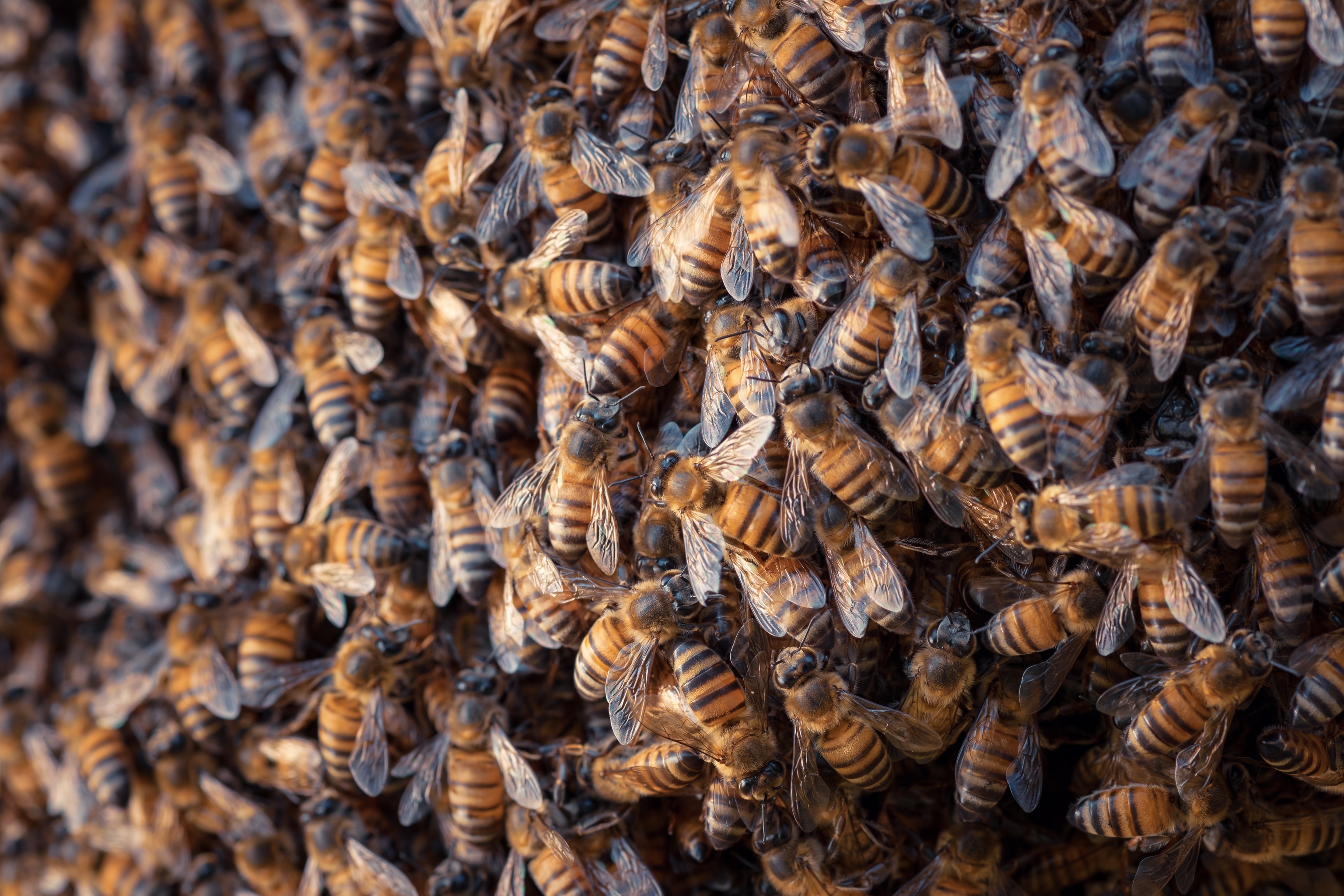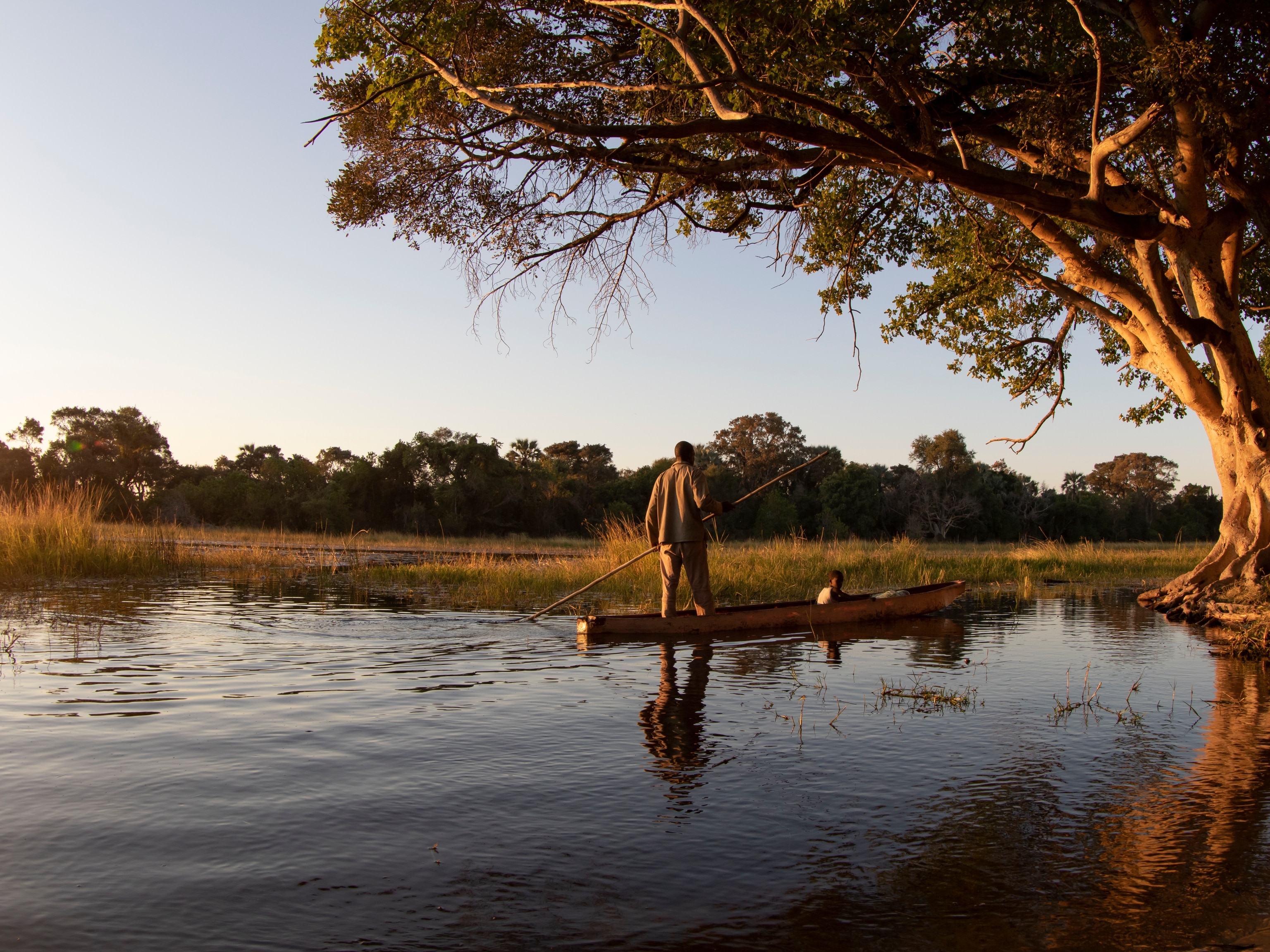Empowering people to protect the Okavango Basin
For a prosperous future in the Okavango Delta, supporting the surrounding communities is as fundamental as preserving the water itself.
Rising from the Kalahari Desert’s vast, flat expanse, three monolithic rocky outcrops form an area of immense cultural and spiritual significance. For over 100,000 years, the Tsodilo Hills have been visited by the people of the Okavango, who made their presence known through over 4,500 rock paintings. This art depicts people and nature over many thousands of years. Ancestors of the San hunter-gatherers believed that their creator lowered all creatures down from the sky into Tsodilo―people first, followed by animals―to help them survive. It was a time when humans and wildlife were considered equal. A symbiotic relationship recorded across one oasis in the Kalahari that may well be key to ensuring the survival of another—the Okavango Delta.

An enormous alluvial fan hosting critical populations of mammals, birds, fish, and amphibians, the Delta is a visitor’s paradise that supports a strong conservation-based tourism economy and many thousands of jobs in Botswana. The Delta is protected by the Government of Botswana, but the source waters that supply the Delta in Angola, and the rivers that transport it through Namibia, do not yet have official protection. What happens to these waters could impact the health of the wetland ecosystem that supports major peri-urban populations, as well as the people, including the Hambukushu, Dxeriku, Bugakwe, Xanekwe, BaYei, and many others who live within the wider Okavango River Basin. Each community is unique, with its own language, customs, and ways of living. Increasingly, the appeal of higher incomes and better living standards in more urban areas is luring people away—shrinking villages and loosening ties to cultural heritage. Swaths of land in Angola without communities to steward them are also vulnerable to short-sighted forms of development, like large-scale commercial agriculture.
The future of the Delta depends on the Basin, and the future of the Basin depends on how the needs of both wildlife and people are met. Many, including trusts, conservation organizations, and local communities, are working to get this balance right. The National Geographic Okavango Wilderness Project (NGOWP) is working with local communities to support this ongoing work. After seven years of collecting environmental, biodiversity and socio-economic data across the Okavango River Basin, the NGOWP is embarking on its next phase of conservation work with leading diamond company De Beers. Through its own Building Forever initiative, De Beers is committed to creating positive impacts for the people and countries in which its diamonds are discovered. The Okavango Eternal partnership between De Beers and National Geographic aims to support long-term, sustainable economic development in communities across the entire watershed area.
In Ngamiland, the district in northwest Botswana where the Delta is located, collaborative efforts are already underway, working with teachers in surrounding villages on “educator expeditions,” so they in turn can help the students they teach to understand key historical, traditional and scientific principles, supporting the critical importance of the water that feeds the Delta. “The focus is on going to schools, taking teachers out in the backyards of the villages that they teach in, just to have a better understanding of the cultural identity and environment around them through the eyes of important people from that village, like the local shaman,” says Koketso Mookodi, the NGOWP Country Director for Botswana who runs the Okavango Eternal educator expeditions.
Education is an important focus area for the Okavango Eternal partnership, and not just for local children. Through Okavango Eternal, Mookodi and her team are planning the establishment of a cultural knowledge center that will focus on sharing traditional skills, as well as bringing some of the business courses available in urban areas to rural ones. Seasonal livelihoods, such as fishing or farming, can also be supplemented with trade skills like plumbing or carpentry for a year-round income that doesn’t rely on moving away or depleting natural resources. This will build on work De Beers is already doing to support women in the Delta through its Accelerating Women-Owned Micro-Enterprises (AWOME) program focused on entrepreneurs in the informal sector.
As part of Okavango Eternal’s goal of supporting 10,000 livelihoods across the Okavango River Basin by 2030, a key focus will be on creating livelihood opportunities based on conservation and ecotourism, which are central to the ongoing protection of the Okavango Delta and the income it generates. Enabling more local community members to get involved in the tourism sector is a key focus, and one example of doing this is through the use of mekoro, the traditional dugout canoes that are synonymous with the way of life across the region. Introduced to the area by the BaYei centuries ago, these slender vessels are skillfully punted, or poled, along narrow channels and rivers by exceptionally talented individuals in most local communities.
“Their skills are very, very unique to the [local culture] here,” explains Mookodi. “Yet, they don’t get the opportunities that other guides, [like those for] safari tours or other kinds of travel guides, are given. Not only is their knowledge at risk, but also their livelihoods.” As it turns out, the key to spreading the word about this niche skill is to turn it into a competitive sport.
In 2018, the inaugural Nkashi Classic (named after the pole used to push a mokoro) was held in Maun, Botswana, with unbelievable success. It was a talked about cultural event that included art, crafts, food, and discussion on the importance of the water―not to mention a time-trial-style mekoro race that attracted the fastest polers from the most far-reaching places. Treated like rock stars, polers were championed for their abilities, with cultural pride at an all-time high when any young guns snapping at more experienced heels were put firmly in their place in the rankings—and eager for another chance next year. A partnership with the Botswana Tourism Board and a Botswana-made film of the event hopes to help gain international support for integrating mokoro tours and events into the ecotourism landscape as tourists start to see the value of adding a mokoro tour to their safari holiday. As part of the goal to build more local livelihoods, Okavango Eternal will continue to organize and fund future Nkashi Classic events.

With much in motion for communities in the south of the Basin, the question of how to achieve similar success for those living further north remains. Angola, where the source waters of the Delta are found, faces a more complicated situation, which is unlikely to be solved by tourism—at least not in the first few years. The large populations of photogenic animals that proliferate in the Delta aren’t present here, and thick woodland areas would make leisure viewing of the source lakes an exclusive—and expensive—endeavor. “I can’t envision a near future with direct benefits to local communities from tourism,” says Kerllen Costa, NGOWP Country Director for Angola. Ecosystems in Angola are threatened simply by local communities needing to make a living through traditional means such as hunting and farming. But, especially as populations and the pressure to earn more income increases, more resources are being appropriated than can be sustainably sourced.
The answer isn’t simply creating a national park around important areas; law mandates that people can’t live in lands under that designation. “We are looking more at biosphere reserves that allow for some economic activities,” explains Costa. “The objective is to have communities be enabled to enhance the way they use their ecosystem, but in ways that allow for certain measurements of protection as to not destroy that ecosystem.” In a landmark gathering in 2019, Costa and other project leaders met with the elders of around 30 communities in Tempué village, eventually agreeing on how best to work together to help protect the forests and source lakes. Since then, Tempué has become an initial hub for development projects, the first of which is the introduction of more productive beehive designs and harvesting techniques to integrate rural communities into Angola’s honey industry. Ideally, the success of these steps will give producers―and their communities―access to more global markets through cooperatives for not only honey, but eventually other forms of sustainable agriculture.

As the ancient rock art at Tsodilo continues to demonstrate, lessons learned from southern Africa’s earliest inhabitants are a gift that keeps on giving—the people and communities descended from them, and the knowledge they hold, are what will guide the Okavango River Basin to prosperity. “Every time I go to Tsodilo, it just gives me a sense of hope,” muses Mookodi. “Seeing what happened in the past, the creativity and intelligence that are depicted, it gives me hope for the future.”
Find out more about how De Beers create positive impacts here.



